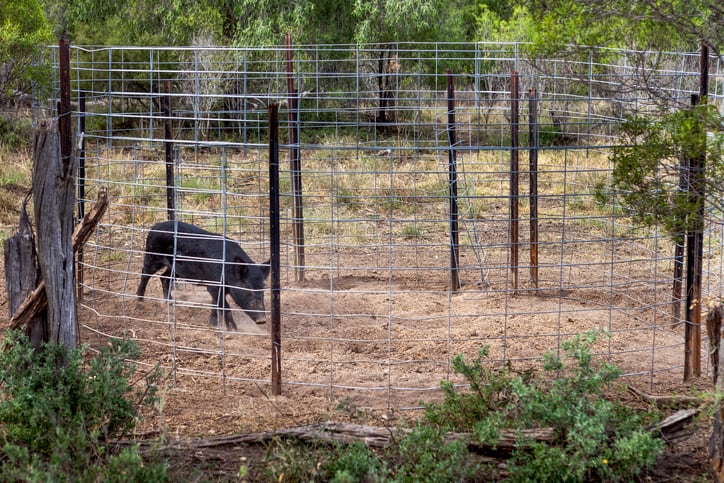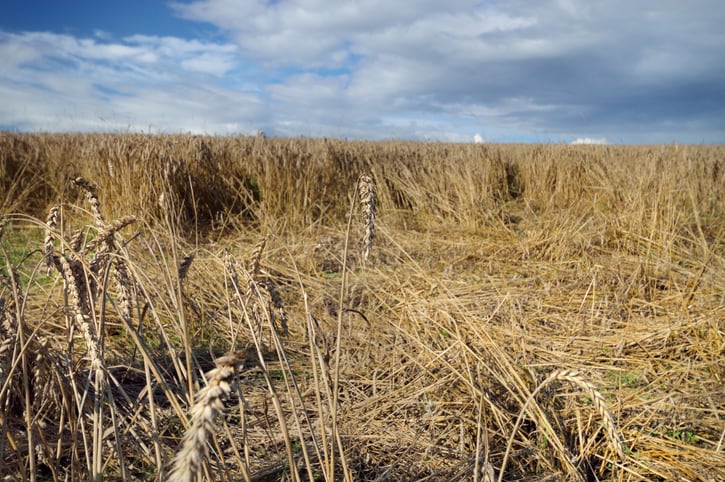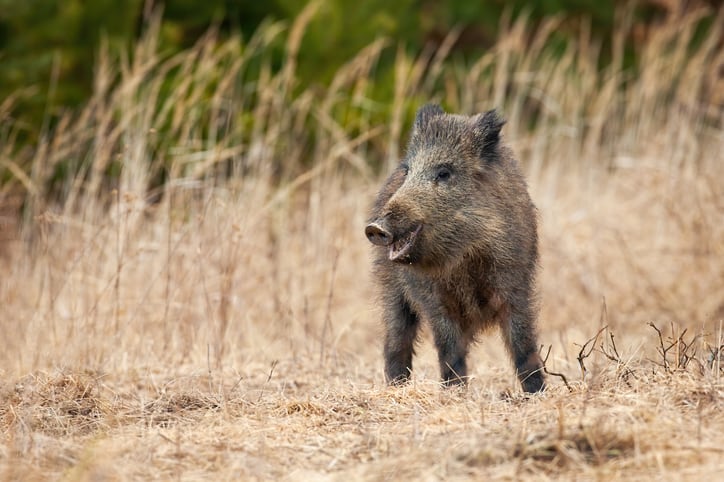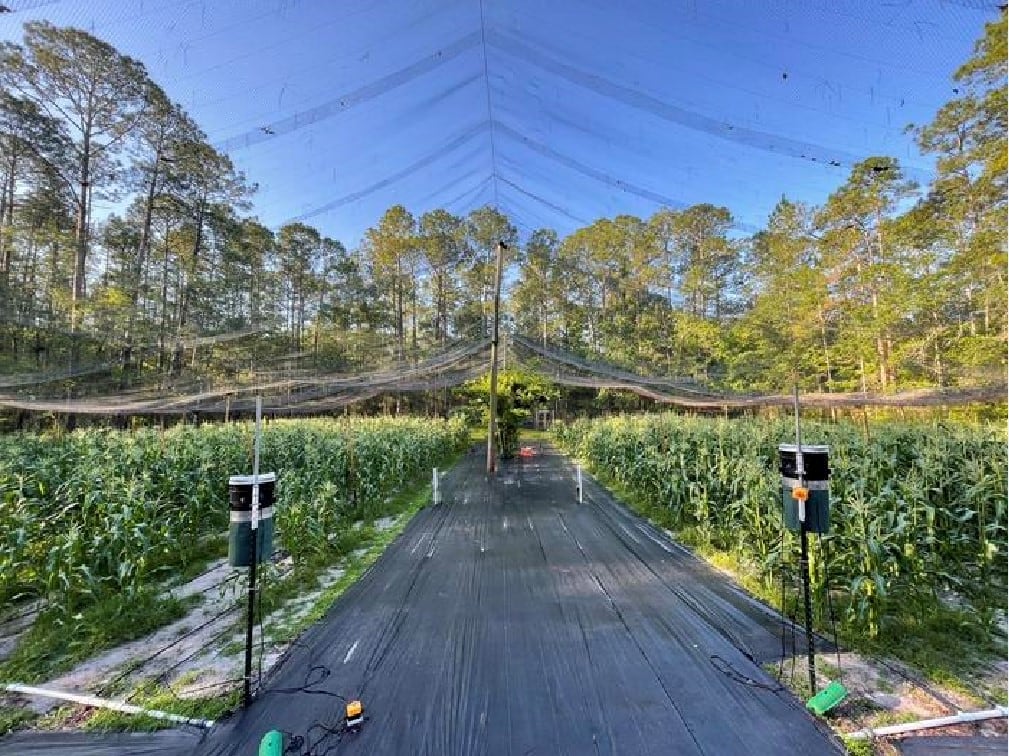Is the future of an entire sector at stake? That was the recent warning from Italian agricultural association Coldiretti’s regional arm in Molise regarding the “very serious problem of the uncontrolled increase in wildlife” – chiefly wild boars. These now number over 40,000 in Molise, a mountainous region in southeast-central Italy. In Italy as a whole, numbers have risen from 500,000 in 2010 to 2.3 million today, according to Coldiretti.
“The problem of damage caused by wildlife continues to be one of the major critical issues that regional agriculture and livestock farming are suffering,” said the director of Coldiretti Molise, Aniello Ascolese.
The situation risks “causing the collapse of the entire agricultural sector which in Molise represents one of the main driving forces of the regional economy,” added Ascolese. He complained that wild boars in Molise now far outnumber the ‘two animals per square kilometre’ rule needed in maintaining the balance of the ecosystem.
These pigs are a problem for many reasons. They damage fields by rooting in search of food (they will eat almost any crop) and to dig holes to wallow in. Sometimes these holes are so big that heavy machinery is needed to fill them back in again. They can break irrigation lines, rip or tear nets, trellises, drying racks, and other equipment.
They can devastate orchards and vineyards and damage large trees by scraping bark off with their tusks to mark territory, creating an entry point for diseases on the tree.
More importantly, they threaten livestock health too. Last year in Lombardy – Italy's pork belt in the north of the country where around half of all animals in the country are kept – almost 34,000 pigs were culled in a week to contain the country’s largest outbreak of African swine fever virus since the 1960s. Wild boar populations, which provide a reservoir for the virus, were blamed, threatening the Lombardy pig industry worth around 60 million euros a month.
It’s not just an Italian problem. According to NFU Scotland, which represents the farming industry in the country, the Scottish government was warned nearly a decade ago that feral pigs were getting out of control. That was back in 2022. There have since been reports in the press about them attacking livestock, such as sheep, for food. In the quaint and historic Forest of Dean in south-west England, where wild boar numbers have reached nearly 900, a family was ‘heartbroken’ after the animals trashed a camping area.
Last year, Australia appointed the first State Feral Pig Coordinator, or a feral pig ‘tzar’, in New South Wales, tasked with eliminating a tripling in numbers in the past few years. There are now nearly as many feral pigs (around 24 million) living down under as people (26 million).

In the US, feral swine have been reported in at least US 35 states. Their population is estimated at over six million and is also rapidly expanding, according to the USDA, due to factors including their adaptability to a variety of climates and conditions, translocation by humans, and a lack of natural predators.
US northern states were particularly braced for a boar invasion in 2019 after the first-ever published survey of the wild pig distribution in Canada found a rapid expansion in the species’ range. Numbers were increasing by nine per cent a year, the report said, making them the most prolific invasive mammal in Canada.
“Wild pigs are ecological train wrecks. They are prolific breeders making them an extremely successful invasive species,” said Ruth Aschim, a PhD student who led the research. “Wild pigs can cause soil erosion, degrade water quality, destroy crops, and prey on small mammals, amphibians and birds.”
Wild pigs can adapt to almost any climate, from North Africa to Russia and Canada – they have been documented in the Galapagos Islands – and now have the widest distribution of any large mammal on earth. “The growing wild pig population is not an ecological disaster waiting to happen – it is already happening,” said Ryan Brook, lead researcher for the Canadian Wild Pig Project, a Canada-wide research programme, and Aschim’s supervisor.
No silver bullets
Back in Molise, Ascolese described the wild boar intrusion as “a real and very serious emergency which Coldiretti is fighting with all possible means". The region has trained up over 180 new ‘selecontrollers’ or hunting experts authorised to intervene at the request of landowners where wild boar presence is detected. But after first raising the issue more than two months ago, Coldiretti Molise has bemoaned an absence of concrete actions. This echoes NFU Scotland’s complaints in 2022 that it is “beyond time solutions were enacted upon”.
Options available for managing feral pigs include baiting, trapping, aerial shooting, ground shooting, and fencing. But there’s no silver bullet option. That’s because, on top of being notoriously invasive, wild pigs are notoriously smart. They are capable of learning from bad experiences. Hunt them in the day and they will become nocturnal and more difficult to trail. If a trap fails to capture the entire sounder or herd, the rest know not to enter it.
There are other problems. Corral trapping is less labour-intensive than drop-netting. But the equipment needed for drop-netting might be more expensive. Guns are expensive too. Equipment for a successful hunt in the US costs over US$7,000, estimates Aaron Sumrall, director of outreach, education and research at Pig Brig, which makes nets to catch wild boar. Hunting requires “hours of stealthy pursuit”, he told AgTechNavigator, with typically just one pig removed from each sounder.
Improving technology means trap systems can be user activated from remote locations. That’s great if you don’t mind staying up all night to watch a screen to see what has entered your trap. It might not even be a boar you’ve caught, but a non-invasive animal like a deer.
The technology needed to set up a live feed on a camera can cost up to US$65/month, claimed Sumrall. “Smart trap cameras have a continual draw on the battery power forcing the system to operate through solar panels or expensive rechargeable batteries."
Finally, when smart traps are activated, it is not uncommon for feral pigs to be crushed underneath them. They might even “violently throw themselves” into the metal sides of the trap and injure themselves, according to Sumrall.
US-based Pig Brig spotted a gap in the market for its more ‘humane, lightweight and simple to use’ solution to the problem. “Standard catches range from 15-25 individuals with catches into the 40s being typical,” said Sumrall. Essentially operating like a large fishing net large fishing net the entire trap system can fit into a backpack. “It is a true multi-catch trap system because it allows feral pigs to continually enter the trap silently. There’s no loud activation of falling catch gates, so the pigs do not know they have been caught until they try to leave. The system does not require any technology for the trap to properly function, thus no data plans, required signal, solar panels, dead batteries, or staying up all night.”
It is patented in the US, Canada, and Australia, and it is currently pending in the European Union. “With nearly 7,000 Pig Brigs in 35 countries, we are confident in stating feral pigs have not shown hesitancy toward our system nor have they figured out how to escape,” Sumrall said.

What happens to the hogs once a farmer has trapped them? In the US feral hogs are classified as an exotic, invasive, free-ranging, opportunistic omnivores which places "ownership" of the species on the owner of the land where they reside, explained Sumrall. The fate of the captured feral hogs is therefore at the discretion of the landowner and existing state laws. They are usually buried on the farm. Currently, only three states that allow the transporting of live feral hogs with the remaining states requiring individuals to be dispatched at the trap site. Dispatched feral hogs are not allowed in the public food supply due to the absence of meat inspection by appropriate agencies.
The solution is timely, he insisted, while understanding is slowly increasing to allow agriculture to deal with the wild pig problem. Feral hog damage to agricultural commodities, equipment, and land value continues to increase, passing US$2.5 billion annually in the lower 48 states, said the wild hog specialist. “Most states have established a value of loss associated with each feral hog at or above US$300 per pig per year and increasing.”
The 2018 Farm Bill, meanwhile, added about US$100 million over five years toward wild pig eradication efforts and a control pilot programme, although funding hasn’t been finalised.
“Prior to 2018, feral pigs were widely viewed as a wild land or agricultural problem due to relatively little known about the adaptability of the species,” Sumrall said.
“We now have a better understanding of how feral pigs negatively affect water quality, water quantity, recreational opportunities, roadway hazards, zoonotic and animal production diseases, encroachment into urban locations, and the escalating negative effects experienced by native flora and fauna to name a few.”



